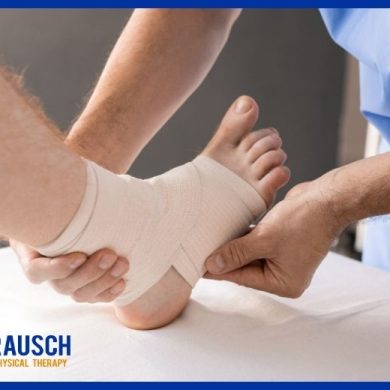At Rausch Physical Therapy and Wellness, we believe that movement is medicine—at every age and every stage of life. That’s why we’re excited to announce our new partnership with Fort Fitness,
Treating Sciatica
September 1, 2022 12:14 pm / Category: Rausch Physical Therapy

Sciatica is a condition many people reference, but do you know what it is? Did you know we can help you with it — a lot? Sciatica is a very uncomfortable symptom of many issues that affect the back, pelvis, and hips. People with sciatica often experience pain in their back as well! Learn more about this condition and how it can be treated, and then call us for your Rausch PT appointment — and let’s discuss your discomfort!
We will look at treatments for acute and chronic sciatica individually:
Acute sciatica treatments
Most cases of acute sciatica respond well to self-care measures, which include:
- Over-the-counter painkillers, such as ibuprofen, which are also available to buy online.
- Exercises, such as walking or light stretching.
- Hot or cold compression packs help to reduce pain. They are available to purchase online. It is often helpful to alternate between the two.
Not all painkillers are suitable for everyone; individuals should be sure to review options with their doctor.
Chronic sciatica treatments
Treatment of chronic sciatica usually involves a combination of self-care measures and medical treatment:
- physical therapy
- cognitive behavioral therapy (CBT) – helps manage chronic pain by training people to react differently to their pain
- painkillers
Surgery may be an option if symptoms have not responded to other treatments and continue to intensify. Surgical options include:
- Lumbar laminectomy – widening of the spinal cord in the lower back to reduce pressure on the nerves.
- Discectomy – partial or entire removal of a herniated disk.
Depending on the cause of sciatica, a surgeon will go over the risks and benefits of surgery and be able to suggest a suitable surgical option.
Exercises and stretches
There are many ways to relieve the pressure on the sciatic nerve through exercise. This allows patients to:
- alleviate their symptoms on their own
- reduce or avoid taking medications where possible
- find longer term comfort and relief for their condition during flare-ups
Causes of sciatica
Sciatica is a common symptom of several different medical conditions; however, an estimated 90 percent of cases are due to a herniated (slipped) disk. The spinal column is made up of three parts:
- vertebra (individual bones in the spine that protect underlying nerves)
- nerves
- disks
Disks are made of cartilage, which is a strong and resilient material; the cartilage acts as a cushion between each vertebra and allows the spine to be flexible. A herniated disk occurs when a disk is pushed out of place, putting pressure on the sciatic nerve.
Other causes of sciatica include:
- Lumbar spinal stenosis – narrowing of the spinal cord in the lower back.
- Spondylolisthesis – a condition where a disk slips forward over the vertebra below it.
- Tumors within the spine – these may compress the root of the sciatic nerve.
- Infection – ultimately affecting the spine.
- Other causes – for instance, injury within the spine.
- Cauda equina syndrome – a rare but serious condition that affects the nerves in the lower part of the spinal cord; it requires immediate medical attention.
In many cases of sciatica, there is no single obvious cause.
Risk factors for sciatic nerve pain
Common risk factors include:
- Age – people in their 30s and 40s have a higher risk of developing sciatica.
- Profession – jobs that require lifting heavy loads for long periods.
- Sedentary lifestyle – people who sit for long periods and are physically inactive are more likely to develop sciatica, compared with active people.
Pregnancy
Although sciatica-like pain can be a problem during pregnancy, an estimated 50–80 percent of women have back pain during pregnancy. Hormones produced during pregnancy, such as relaxing, cause ligaments to loosen up and stretch, which can potentially cause back pain in some women.
However, sciatica due to a herniated disk is no more likely during pregnancy.
Outlook
In most cases, sciatica will go away on its own; in the vast majority of cases, surgery is not needed. Around half of people will recover within 6 weeks.
Prevention of sciatica
In some cases, sciatica can be prevented; there are several lifestyle changes that can reduce the chances of developing it, including regular exercise and making sure proper posture is used when standing, sitting upright, and lifting objects.
Physical therapy is a natural and healthier solution to many pain problems. Our team can teach you proper techniques to reduce your chances of recurrence. If you’re facing sciatica symptoms or other conditions, try a PT session. Find our team at 949-276-5401 or meet us on our Facebook page.
Reference: [https://www.medicalnewstoday.com/articles/7619#treatments]






